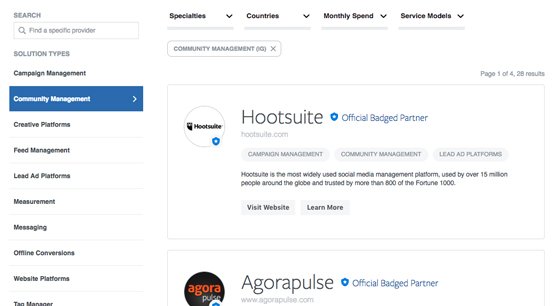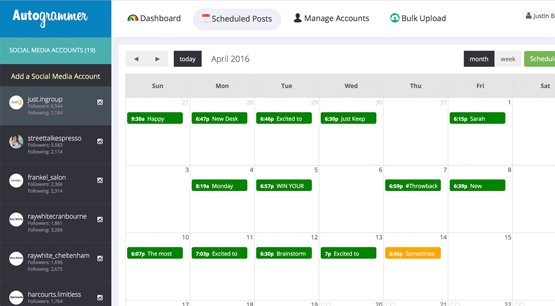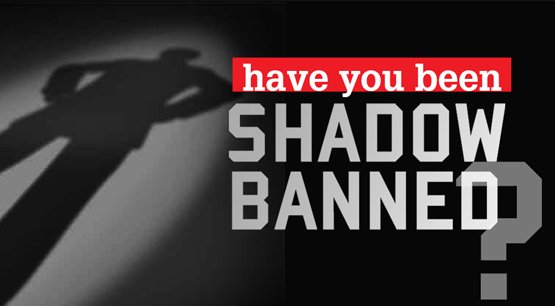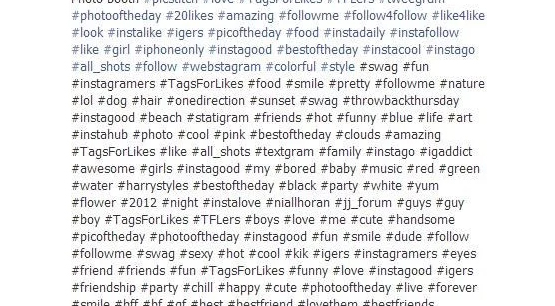10 Reasons Why Your Instagram Likes and Comments Are Dropping
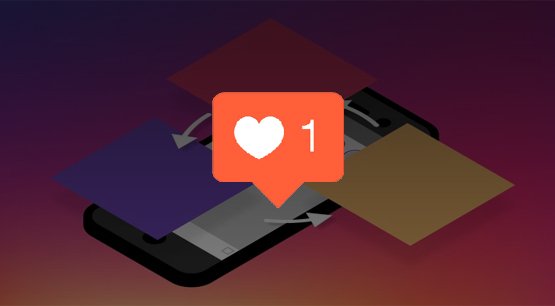
By this point, you should be used to the constantly decreasing engagement rates and reach for posts on Facebook. But Instagram? The image-sharing social network has seen a lot of changes in recent years, but they haven’t done nearly as much messing with their algorithms, at least not in a way that hurts brands. That is, until the last year or so.
If you’ve noticed that your likes, comments, and follows are dropping on Instagram, there are a few possible reasons for it. I’ve compiled the ten most common to discuss.
1. There’s More Competition
Possibly the single biggest change in the last year is that Instagram opened up their API to certain approved third party apps. Apps like Later, Agorapulse, Sprout Social, and Sendible are on the list. These apps, in addition to being Instagram marketing platforms, are now able to post and schedule posts on the social network without workarounds.
What this means is that a lot of people who didn’t want to jump through the hoops to use Instagram are now finding it easy, accessible, and open to them. That means a stark increase in competition for many niches, including the most competitive among them.
When there’s more competition, individual posts get less visibility. People who would have followed your content for lack of options now can pick a different brand to follow. People who would have seen your content in their feed now would need to scroll further than they ever do just to catch a glimpse. It’s not quite so bad as Facebook’s aggressive filtering and 5% reach numbers, but like all popular social networks, it’s getting worse and worse over time.
2. The Downward Spiral
Instagram’s algorithm is known to give preferential treatment to content that gets a lot of engagement very quickly, so long as that engagement doesn’t fit the profile of fake engagement purchased to game the system. “The order of photos and videos in your feed will be based on the likelihood you’ll be interested in the content, your relationship with the person posting and the timeliness of the post.” Sound familiar? This is very much like Facebook’s algorithm in the early days.
What this means is that there’s a feedback loop in place. People who see your content and like it will be shown more of your content in the future, leading to more exposure and more engagement. Conversely, people who see your content and don’t like it will gradually see less and less of it. This is a downward spiral where the worse your engagement rates, the less opportunity you have for more engagement in the future.
There are ways to pull out of this spiral, so it’s not a death sentence. It does, however, typically mean a lot of research into hashtags, post timing, photo creation, and investment into video. You may also consider digging into Stories for their native promotion.
3. You’ve Stopped a Good Technique
Consider all of the basic advice myself and other marketers have given you about Instagram over the years. Post high quality content, use good hashtags, post at the right time, write good captions, all of that good stuff.
An issue I see fairly often is that a company treats these tips like a fad diet. They implement the techniques until they see some growth or hit a certain threshold for followers or engagement, and stop. You reached a goal, right, so now you don’t need to focus as hard on responding to comments or whatever ends up taking the most time for the least visible results.
The reality is, like a good diet, good Instagram posting habits are a life-long commitment. If you stop your diet, you put on weight again. If you stop your basic Instagram marketing techniques, your audience drops.
4. You’ve Hit the Shadowban
The Instagram Shadowban is a soft ban that essentially makes a photo you post invisible on the feeds of your followers. It usually has to do with using a hashtag that has been abused in the past. Instagram has a sort of semi-thriving underworld of vague spam and almost-porn content that uses specific, often unrelated hashtags to organize. If you happen to decide one of those hashtags works for your post because of the activity levels, without actually checking the content, you might find that you hit a shadowban.
Thankfully, all you have to do to recover from a shadowban is stop using that hashtag. Sometimes you might have to delete a post or two that used the banned hashtag. The problem with the shadowban is more realizing that it hit you than taking care of it.
5. Your Audience is Shifting
Audiences change over time. Maybe your users are growing up and getting more mature. Maybe your general demographics have been slowly shifting. Maybe public backlash about some comment or political choice your brand made has changed a shift in outlook. I don’t know, whatever, this kind of thing happens constantly. The key is to be aware of your audience. You can’t use your analytics to figure out demographics and then ride on that information indefinitely, you need to keep that information up to date.
The fact is, over time your content might just stop resonating with some of your audience. Slight shifts in content as you optimize it, combined with shifts in audience, can pull in opposite directions. You just end up posting into the void.
6. Your Hashtag Choice is Wrong
Other than the shadowban, hashtags can have a pretty huge effect on your reach and engagement levels. A lot of users browse hashtag feeds rather than, or in addition to, their own feeds, particularly when they only follow a handful of accounts. These hashtag feeds can be pretty hard to break into. On the one hand, the only sure-fire way of getting exposure from a hashtag is to dominate it by being in the featured content box. If you can’t get there, you only have a short time in the spotlight in the chronological feed.
You need to pick the right hashtags for each post. This means making sure they aren’t abused or shadowbanned. It also means making sure they aren’t too active or dominated by other accounts, meaning you have no chance at exposure. Conversely, you need to make sure they have a minimum level of activity so they’re actually worth reaching.
Think of it like a speaking engagement. If you bring a soap box to a presidential rally you won’t get much or any attention. If you attend two dozen one-on-one meetings with homeowners, you get a lot of attention from a very small number of people. You need to find something somewhere in the middle.
7. Your Engagement Sellers are Dying
In most cases, I assume my audience isn’t usually buying fake engagement or fake followers, but I have to acknowledge the possibility. Instagram is very aggressive with purging bot accounts and spam accounts when they find them, to the extent that it’s well-known that purges happen. High profile celebrities lose millions of followers at a time.
Some engagement sellers end up dying off, and if you happen to be using one of them, your engagement you get from them is going to taper off until either they stop responding or you stop paying them. It’s simply too much work to keep up with Instagram’s changing filters and the need to constantly create new accounts for the botnet.
Even if the seller isn’t dying, their engagement past a certain age is likely being wiped out bit by bit. This makes the past performance of your account look worse, and makes it harder to snowball into future engagement. Of course, it’s a lot better if you just stop buying fake metrics and focus on the techniques that really work.
8. You’re Not Responsive
For once, I don’t mean responsive design. Instagram takes care of that themselves. No, I mean responding to comments when your audience makes them. A huge part of Instagram is the social aspect of being a social network. When users leave comments, they want to know you’re watching. They want to see your responses and engage with you. If they didn’t, they wouldn’t comment in the first place.
Engagement and effort come and go, I know. It can be difficult to build up the energy required to care about your audience day in and day out. If you can hire someone to care for you, that’s a lot better, but it’s not always possible.
If you find yourself slipping, refocus on engagement. Get back into the swing of things and rebuild the habit of responding to comments. Just make sure you’re not responding to the worst comments. The single emojis, the spam, the harassment; this kind of stuff can and should be deleted instead of acknowledged. Don’t give trolls the power of recognition.
9. You’re Phoning it In
I sort of already mentioned this, but it’s easy to just let things slip. The longer you run a moderately successful Instagram account, particularly if you’ve been seeing little or no tangible results from that account, the easier it is to put it on the back burner. You might focus a little less on editing your images and just post them raw with a filter. You might do a little less hashtag research so you’re not quiet as sure every pick is top-tier. You might only respond to a handful of comments for the first 20 minutes instead of the first hour. You might let some spam slip through. After all, it gets hard to care.
The more you slip, the more you phone it in, the more obvious it is that you don’t actually care. Your audience will recognize this and will react accordingly.
Honestly, the best solution to this is to hire a social media manager for your company. If you can pay someone whose full time job is managing your social presence, they’re going to go about it a lot more effectively than you will just doing it as a side task around the rest of your work.
10. You’re Too Commercial
A common issue I see with Instagram is that brands have a tipping point. You start off acting like just another user, until you start to grow. Then you recognize the need to focus on marketing, so you start implementing some marketing techniques. You’re still pulling off the organic look, though, so you keep growing.
Eventually, there comes a tipping point. You’ve grown to the point where you want to start converting that audience into something more. You want those people to become customers. Maybe you start injecting a call to action here or there. Maybe your posts start to focus more on your products than on the stories you’re telling. I don’t know what the specific trigger is, but it’s always something.
It takes a lot of self-control to avoid descending completely into capitalism. The more you focus on conversions instead of audience, the more people are going to be turned away by the commercial nature of your profile. You fall in a hole, and that hole can be hard to climb back out of.
What About You?
I know a lot of you out there use Instagram for marketing, and I know many of you have experienced slumps and pulled out of them. When it happened to you, what did you identify as the problem, and how did you fix it? Let me know down below!




